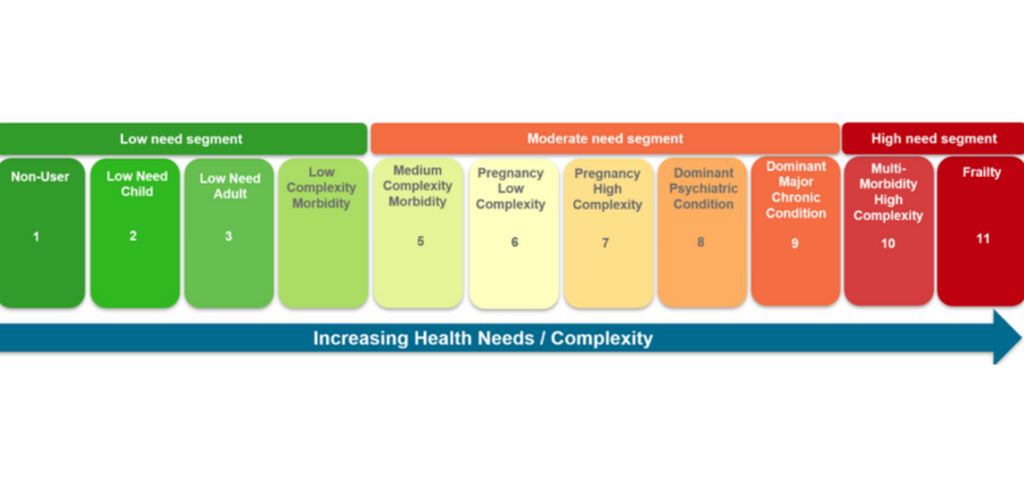You may notice a test result appear in your NHS app referring to Johns Hopkins adjusted clinical groups. In order to help us tailor care according to individual patient need, we now have access to a tool that segments or categorises our patient population into Patient Need Groups (PNGs). This system of segmentation, called the ACG® System, was developed by Johns Hopkins University1, which is renowned for its contributions to advancing medical practices and healthcare systems globally. Segmentation helps us as a practice understand the individual needs of our patients based on their health and wellbeing to support personalised care and ensures you get the right support in a timely way.
What are PNGs and how are they used in healthcare?
Patient Need Groups categorise patients into different groups based on the complexity and intensity of their healthcare needs rather than just their medical conditions.
Instead of focusing solely on a diagnosis (like diabetes or heart disease) it takes in to account a broader range of health characteristics about a patient.

How do PNGs work?
These groups consider factors like the number of chronic conditions (eg diabetes, heart disease, asthma, cancer, dementia, …) the severity of illness and the level of support a patient might need.
The patients in a particular group have similar patterns of need.
For example:
Red PNG 10,11 = Complex Care Needs: Patients with multiple chronic conditions, requiring regular monitoring and a coordinated care approach.
Amber PNG 5-9 = Stable Chronic Conditions: Patients with chronic conditions that are well-managed and require occasional support to maintain their stability.
Green PNG 1-4 = Healthy: Patients without significant health issues who could benefit from preventive care.
As patient needs change over time, their categorisation changes with them.
PNG offers an at-a-glance indication of a patient’s broader needs, at a point in time.
What are the benefits of having this information available on patient records?
- Personalised Care: Healthcare providers can use PNGs to tailor their care plans. This means patients receive the specific type of care they need, whether it’s more frequent monitoring, specialised treatment, or preventive care.
- Improved Coordination: PNGs help healthcare teams coordinate more effectively. If a patient has complex needs, the care team can work together to ensure all aspects of their health are addressed, from medication management to lifestyle support.
- Better Resource Allocation: Hospitals and GP Surgeries can allocate resources more efficiently based on the needs of different patient groups. This ensures that patients with the most urgent needs receive timely care, while those with less critical conditions are managed appropriately.
- Proactive Health Management: For patients in lower-need groups, PNGs encourage preventive care and early intervention. This can help them maintain their health status and avoid complications in the future.
- Enhanced Communication: PNGs facilitate better communication between patients and healthcare providers. By understanding which group a patient falls into, together they can have clearer discussions about what to expect from the care they receive and what actions they can take to manage their health.
Why don’t I have a Johns Hopkins adjusted clinical groups score in my test results?
If you have previously opted out of sharing your health record with local health services and/or used the national data opt-out, you will not have a score.
What if I am unhappy about my data being used for population health management?
The ACG® system helps us to help you get the right support at the right time based on your specific health needs. However, if you wish to opt out, you can do so by choosing ‘national data opt-out’: Make your choice about sharing data from your health records – NHS